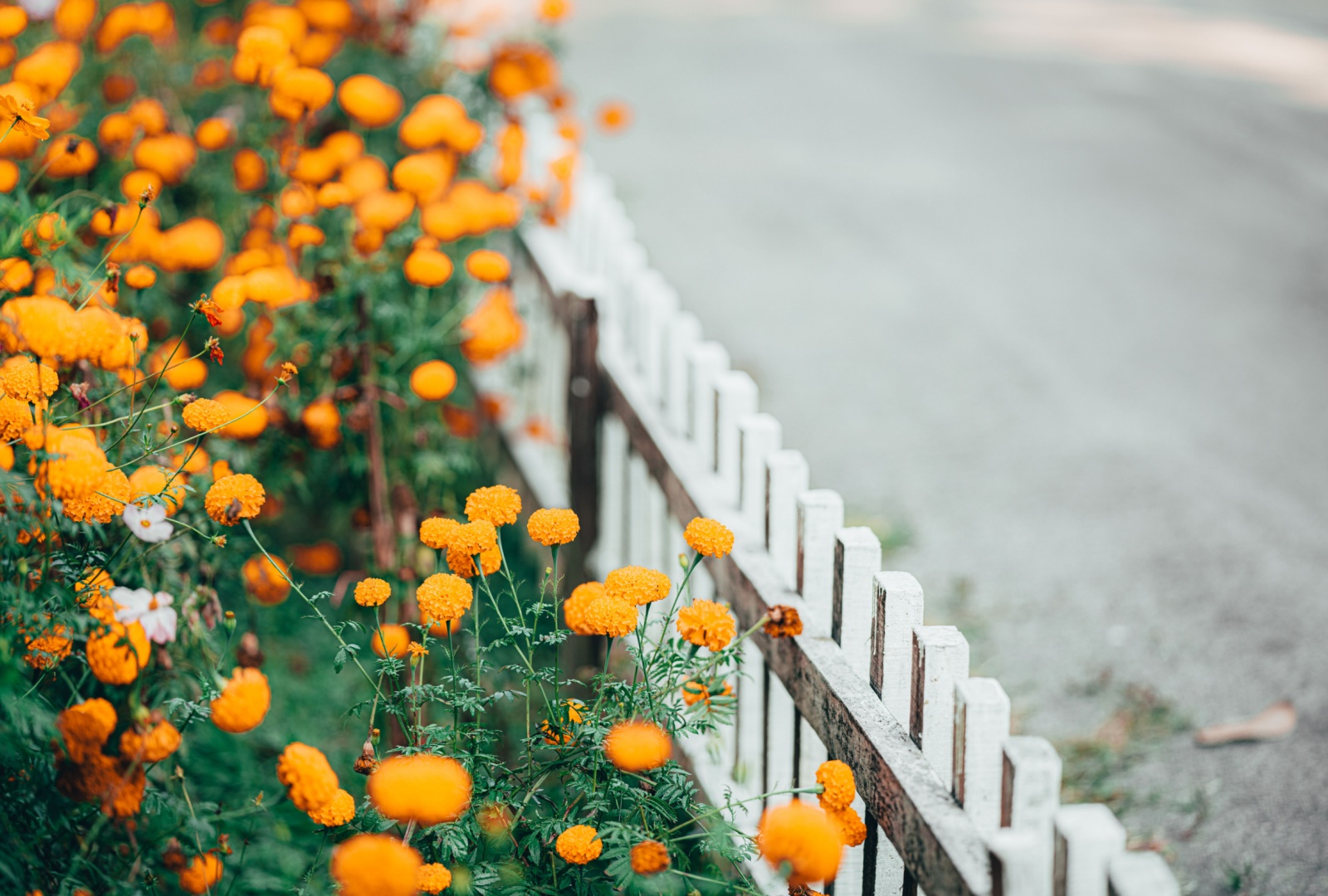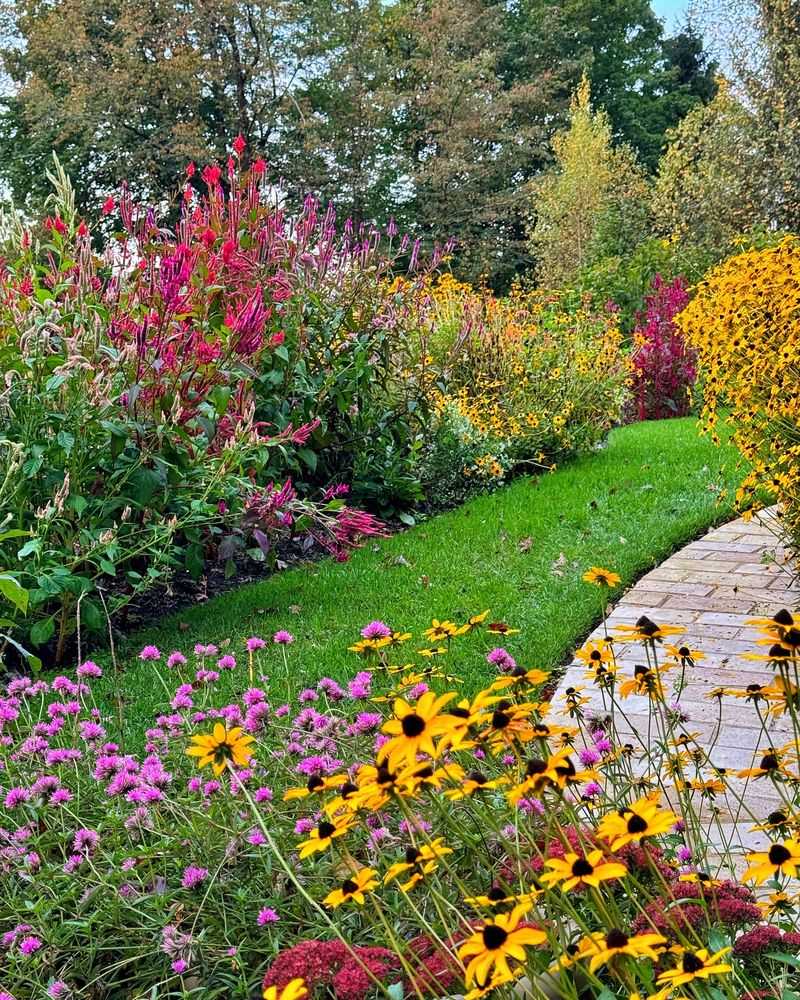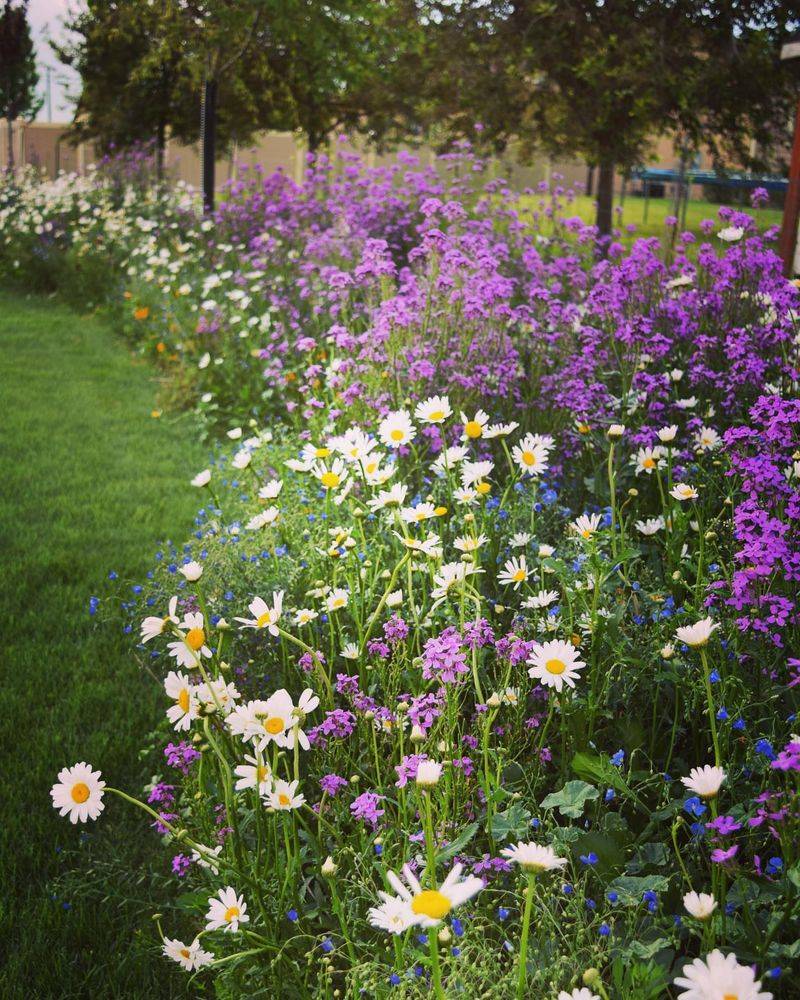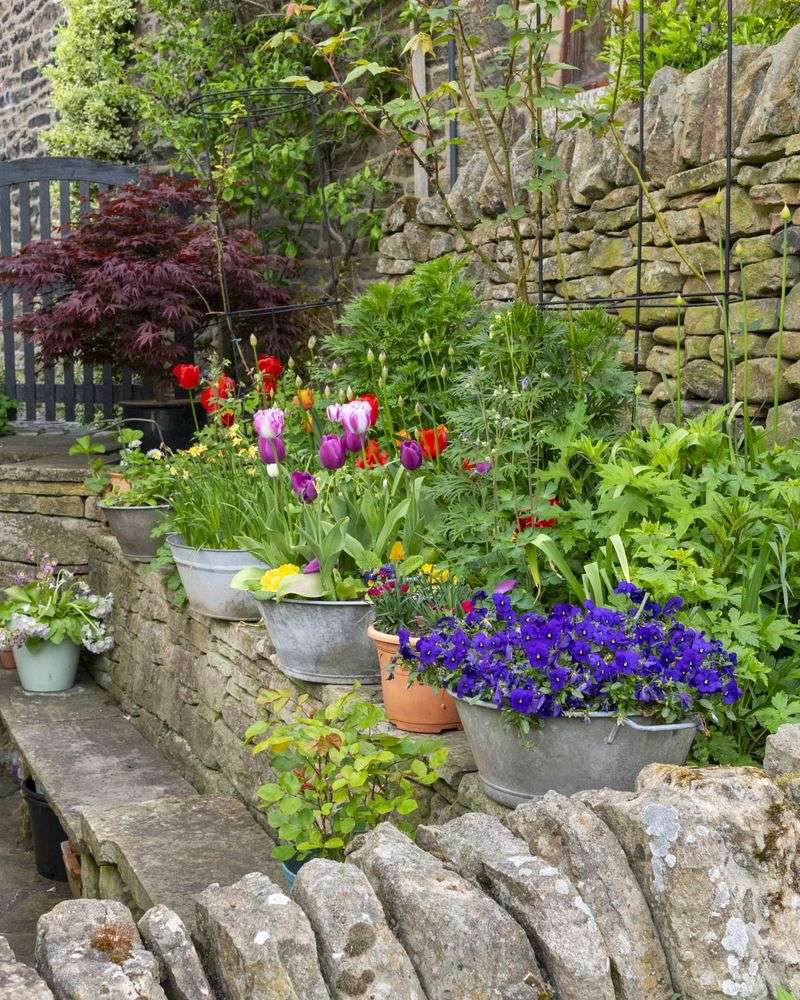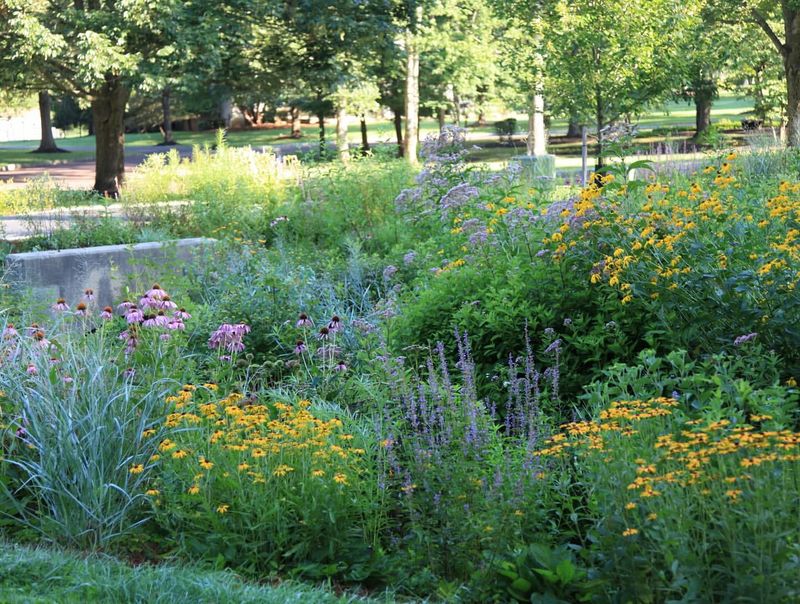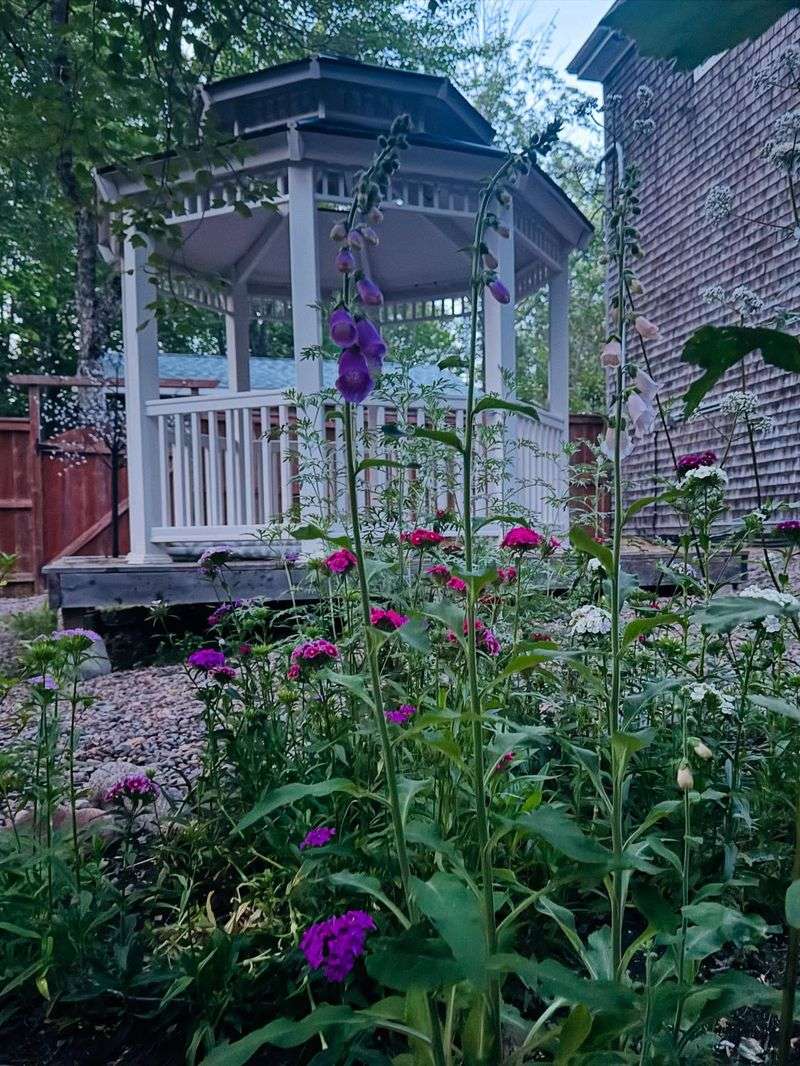Charleston gardens are famous for their traditional beauty, but adding wildflower borders this fall can bring exciting new energy to these classic spaces. Wildflowers add color, attract pollinators, and require less maintenance than formal plantings.
The controlled chaos of wildflower borders creates a perfect balance with Charleston’s structured garden designs.
1. Replace Tired Annual Beds
Fall is the perfect moment to transform those fading summer annual beds into vibrant wildflower borders. Native species like goldenrod, asters, and black-eyed Susans thrive in Charleston’s autumn climate while providing essential food for migrating butterflies.
Smply clear the spent annuals, loosen the soil, and broadcast a fall-appropriate wildflower mix. The casual beauty will complement Charleston’s architectural formality in surprising ways.
2. Frame Historic Pathways
Charleston’s brick and oyster shell pathways gain fresh perspective when bordered with wildflowers. The contrast between structured walkways and free-flowing plant forms creates visual magic that draws visitors deeper into the garden experience.
Low-growing varieties like verbena and coreopsis won’t obstruct passage while still offering movement and color. The wildflowers’ casual nature also softens the formality of historic garden layouts.
3. Create Living Fencelines
Many Charleston properties feature traditional fencing that can be transformed with wildflower plantings. Tall varieties like joe-pye weed and ironweed create privacy while shorter flowers fill in gaps.
The fence provides structure while flowers add movement and seasonal change. Birds appreciate these borders too, using fence posts as perches while hunting insects among the blossoms.
4. Revitalize Shady Corners
Under Charleston’s magnificent live oaks lie perfect spots for shade-loving wildflower collections. Native woodland species like wild ginger, foam flower, and Solomon’s seal thrive in these protected pockets while adding visual interest to otherwise unused areas.
Planting in drifts rather than rows creates a more natural look. Morning light filtering through oak branches illuminates these plantings beautifully, making early garden strolls extra special.
5. Disguise Utility Areas
Every garden has necessary but unattractive elements like air conditioning units or compost bins. Tall wildflower plantings offer the perfect solution for screening these eyesores while adding habitat value. Charleston’s long growing season means these screens can remain effective well into fall.
Choose sturdy species like sunflowers, Joe-Pye weed, and native grasses that stand up to occasional service access without permanent damage.
6. Transform Drainage Swales
Charleston’s frequent rains necessitate drainage solutions in many gardens. Rather than plain grass swales, wildflower plantings that tolerate both wet and dry conditions create functional beauty.
Species like swamp milkweed, cardinal flower, and blue flag iris handle periodic flooding while providing stunning color. The bonus? These plantings filter runoff before it enters waterways, protecting Charleston’s precious coastal ecosystem.
7. Accent Garden Structures
Charleston gardens often feature gazebos, benches, and arbors that become even more inviting when surrounded by wildflowers. The juxtaposition of architectural elements against natural plant forms creates delightful focal points.
Fall-blooming clematis can climb structures while ground-level plantings provide color below. Choosing fragrant varieties enhances the sensory experience, making garden structures more appealing destinations for outdoor relaxation.
8. Edge Vegetable Gardens
Kitchen gardens gain pollinator power when bordered with wildflowers. Charleston’s fall vegetable beds benefit tremendously from nearby flowers that attract beneficial insects while deterring some pests.
Marigolds, zinnias, and cosmos work beautifully alongside fall crops like collards and kale. The vegetable garden’s neat rows provide structure while wildflower borders add the chaos element, creating visual balance while improving harvests.
9. Naturalize Lawn Areas
Converting portions of traditional Charleston lawns to wildflower meadows reduces maintenance while increasing ecological value. Even small sections can make big impacts when planted with native species. Fall is ideal for starting this transformation with seeds or plugs.
The cooler weather helps establishment while still allowing time for root development before winter. Mowed paths through these areas maintain access while creating delightful exploration opportunities.

